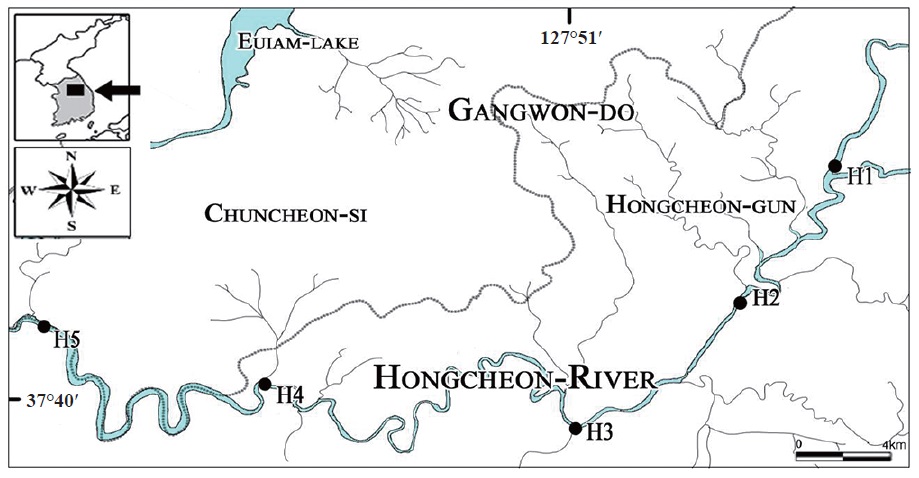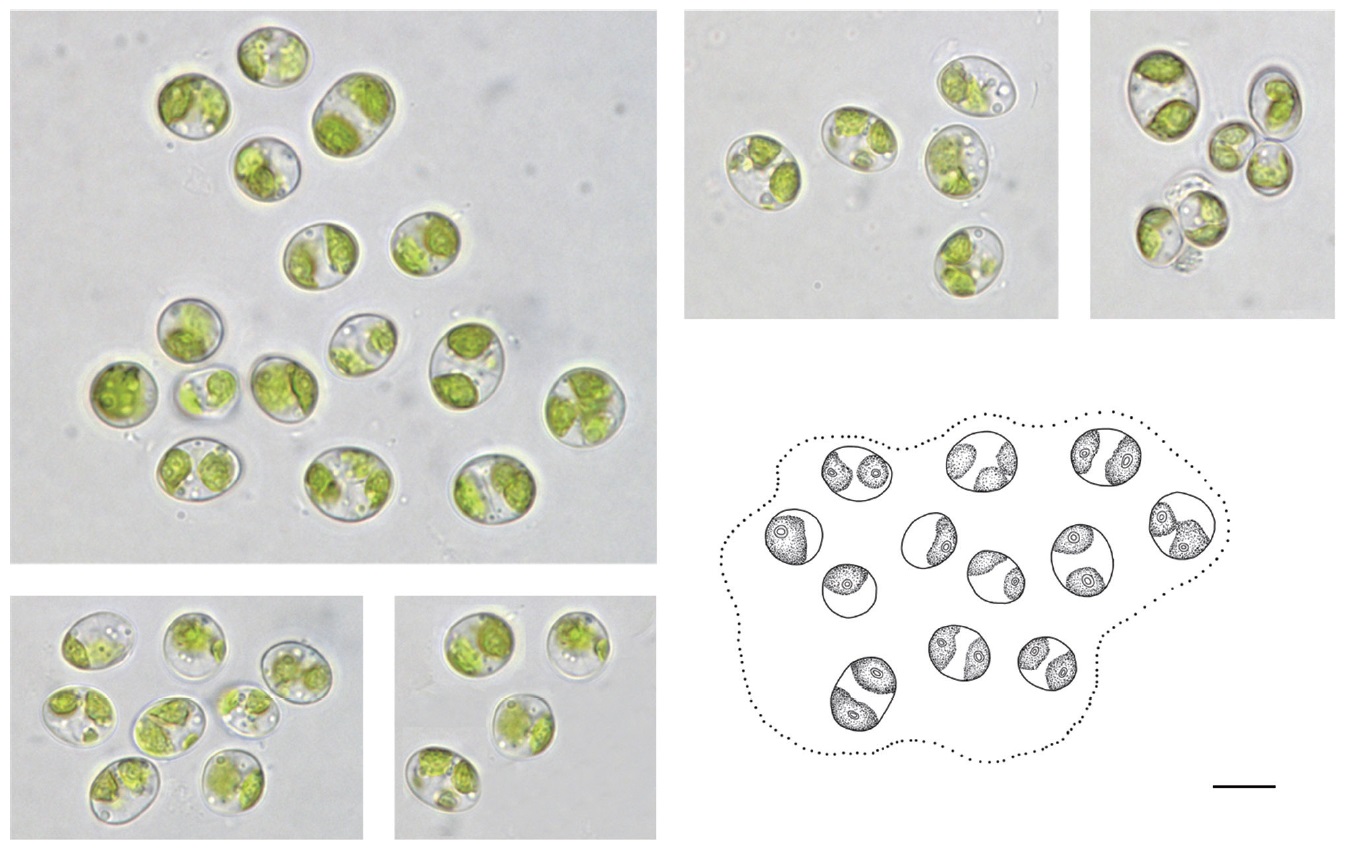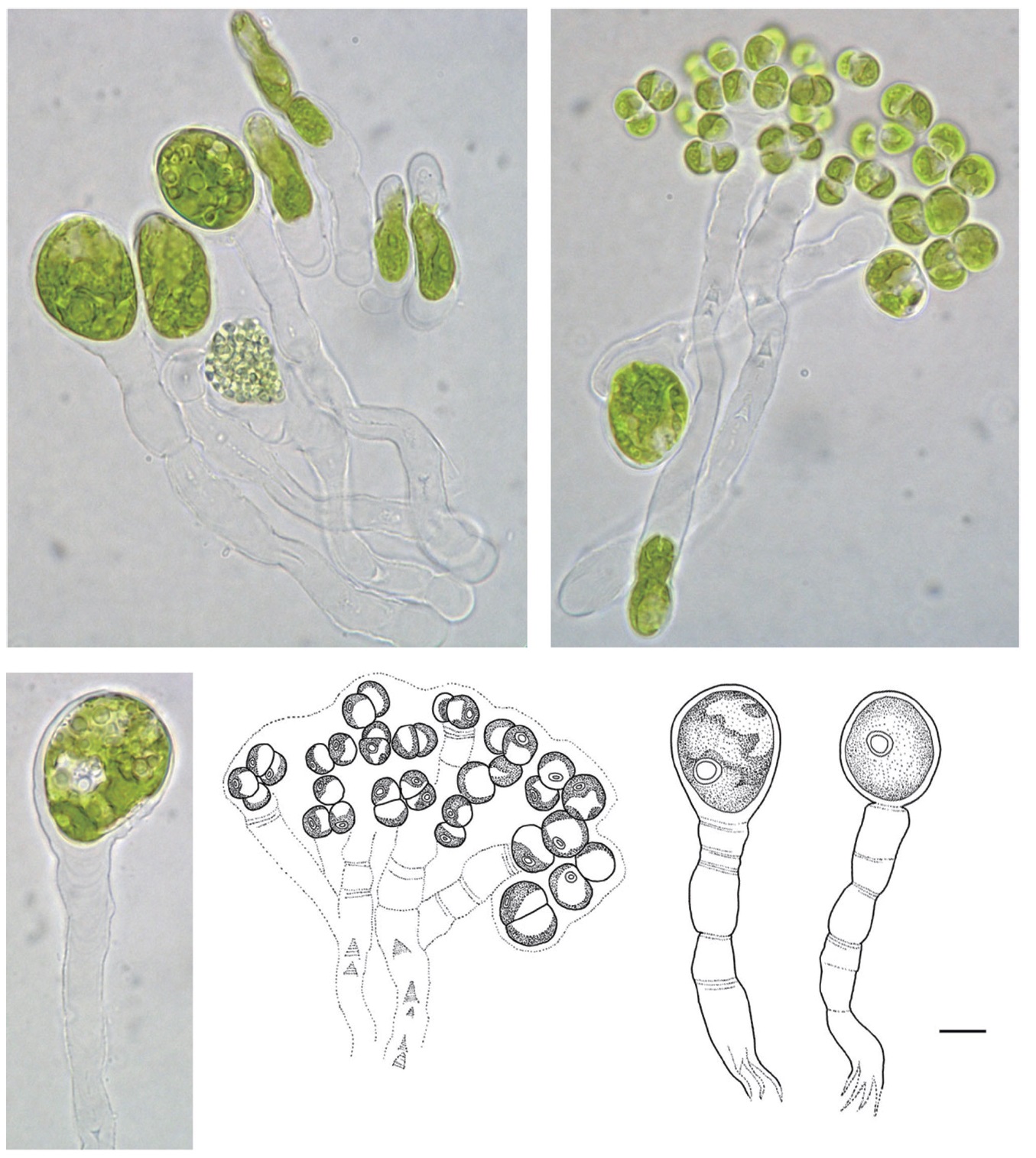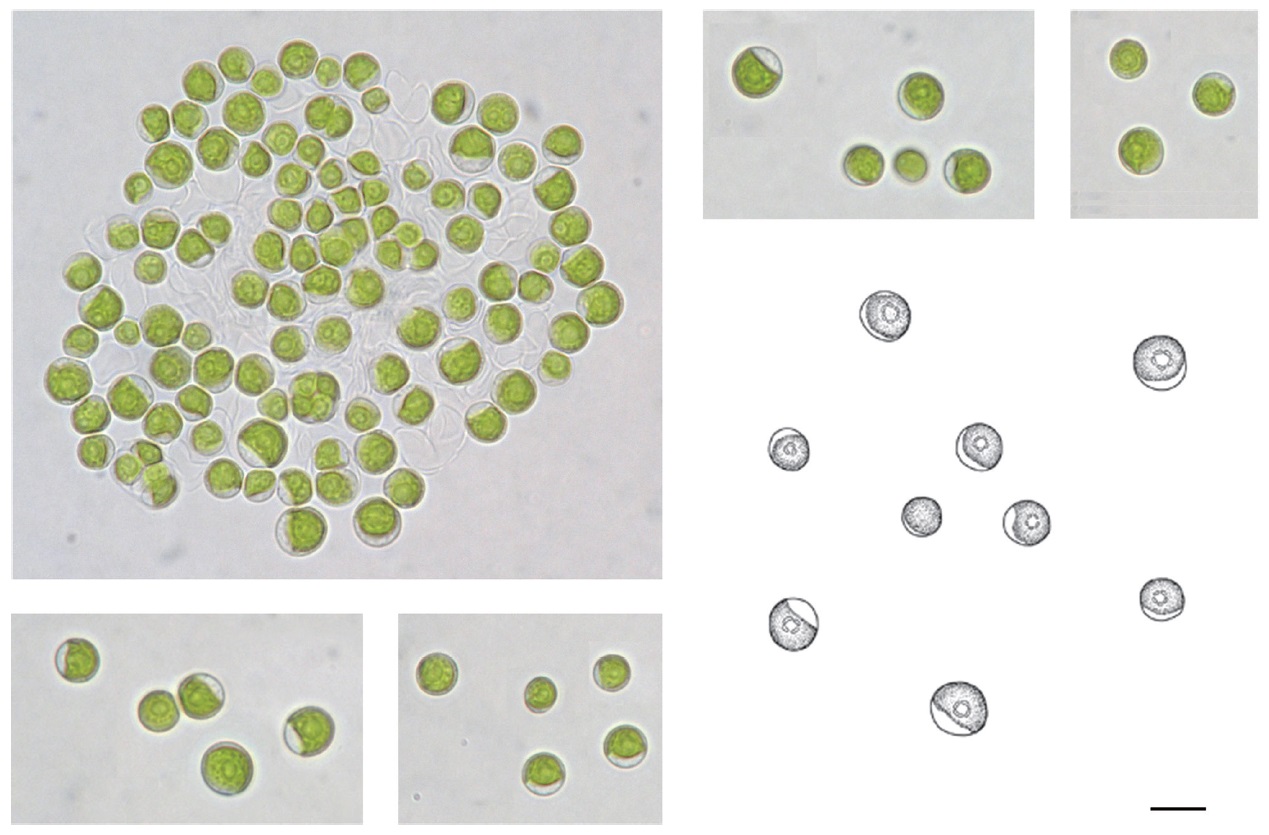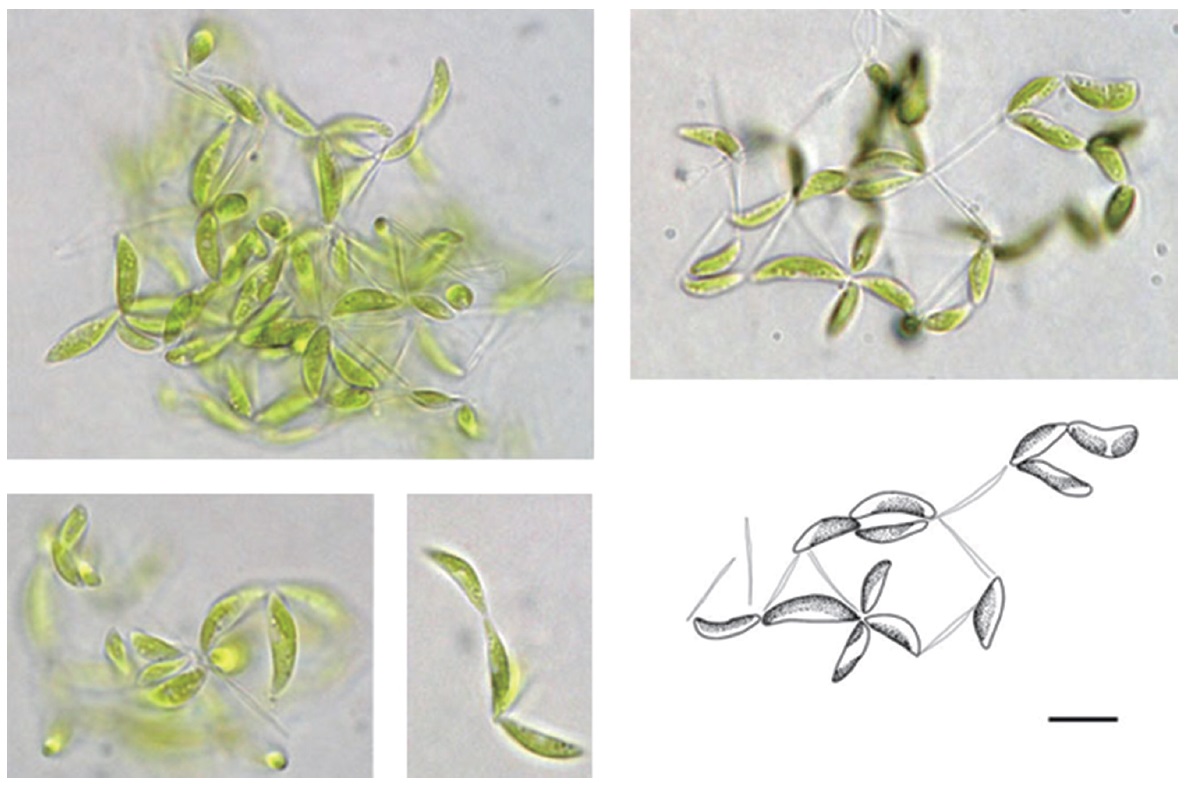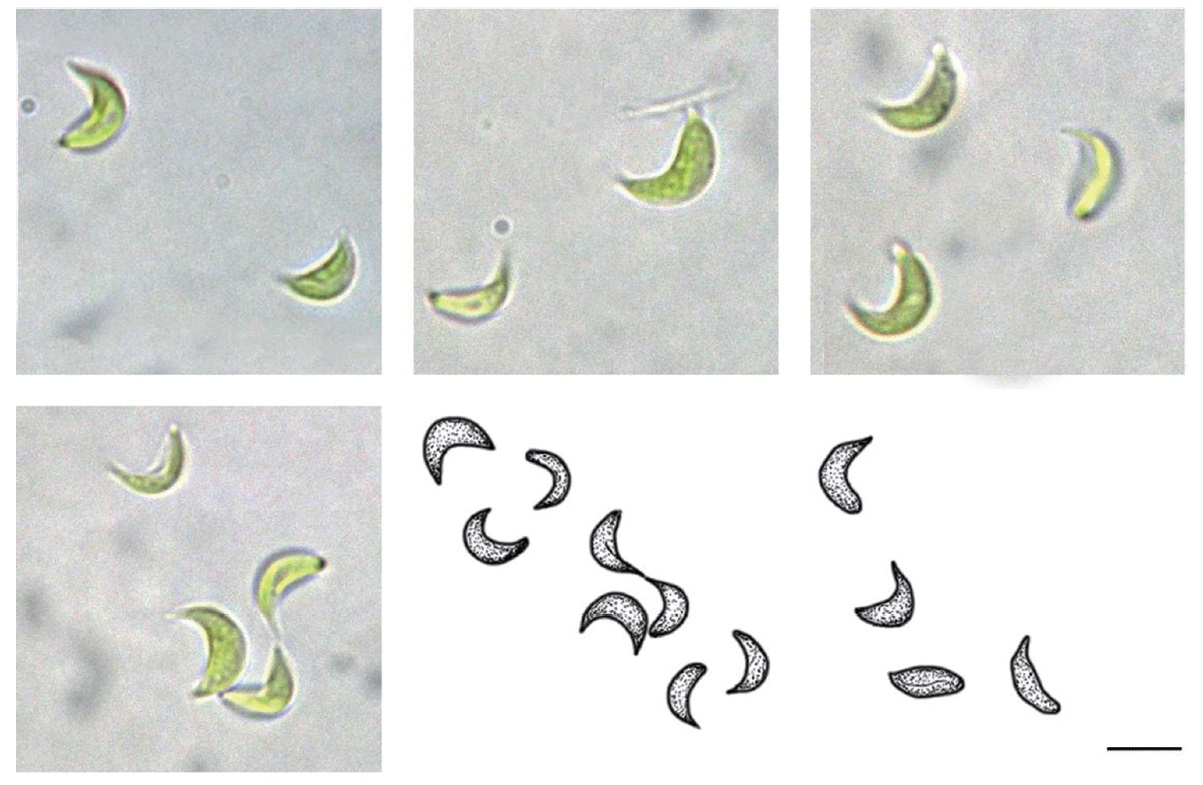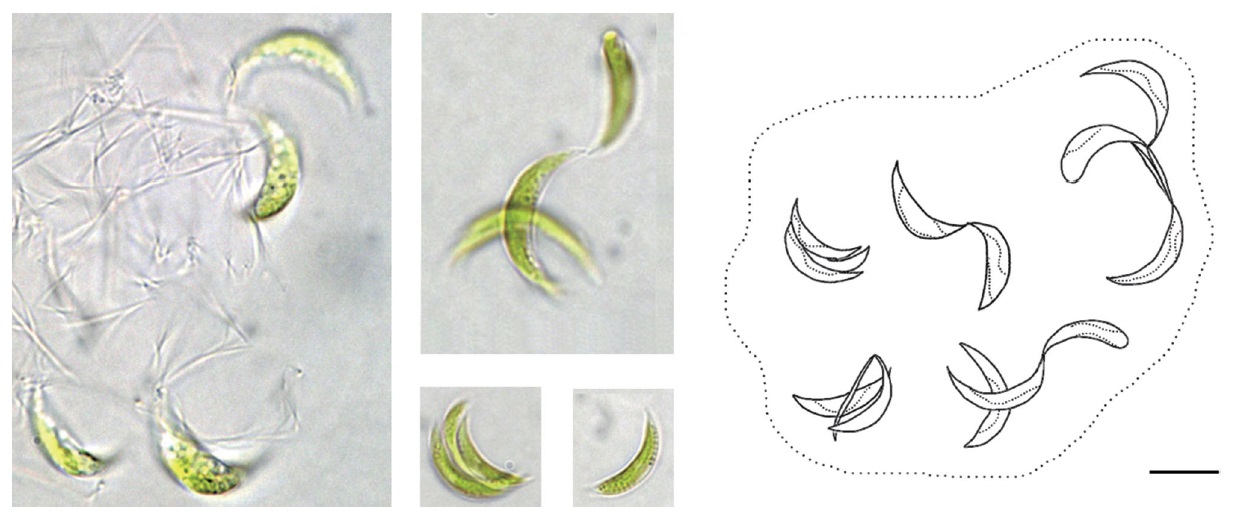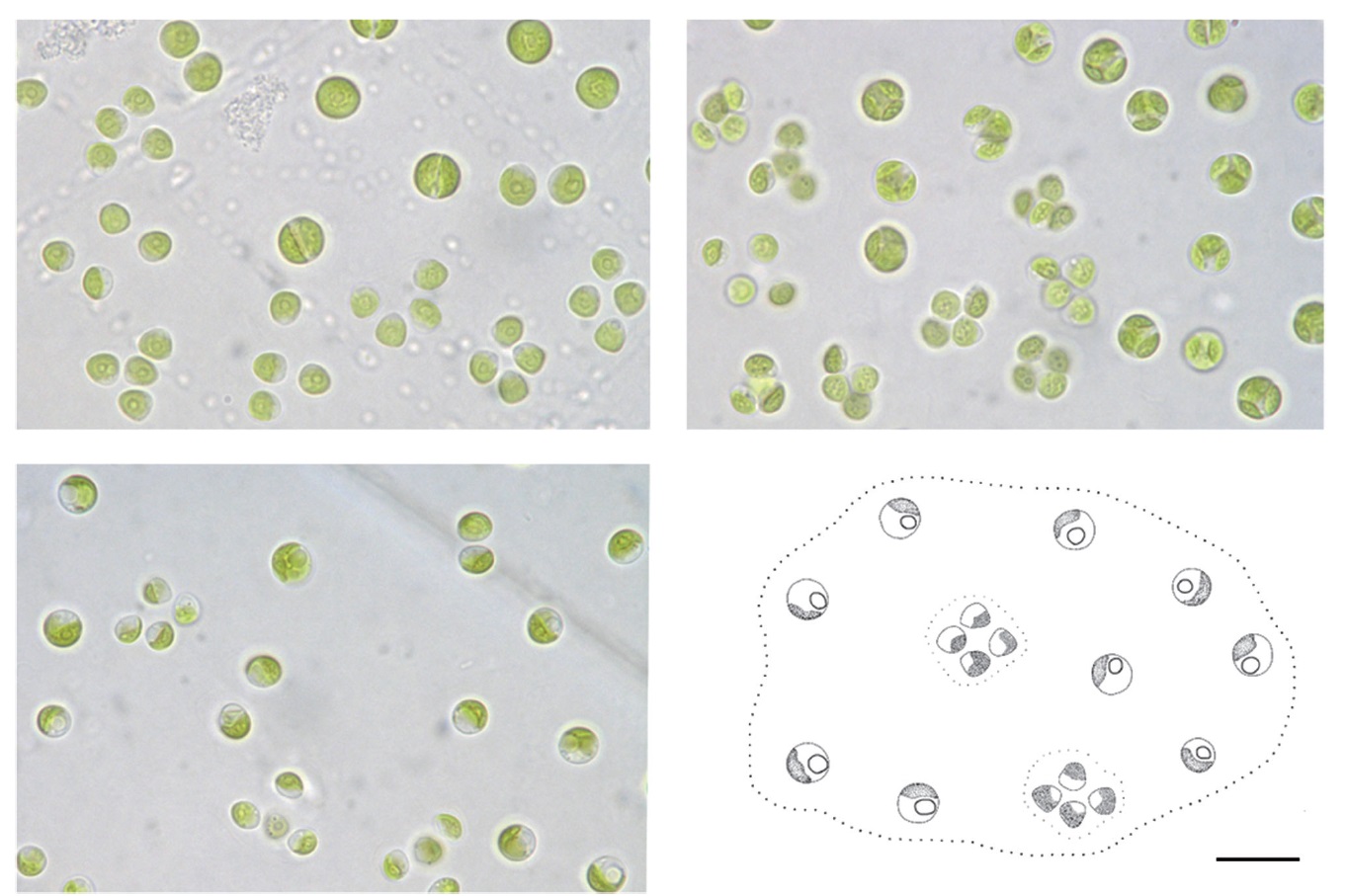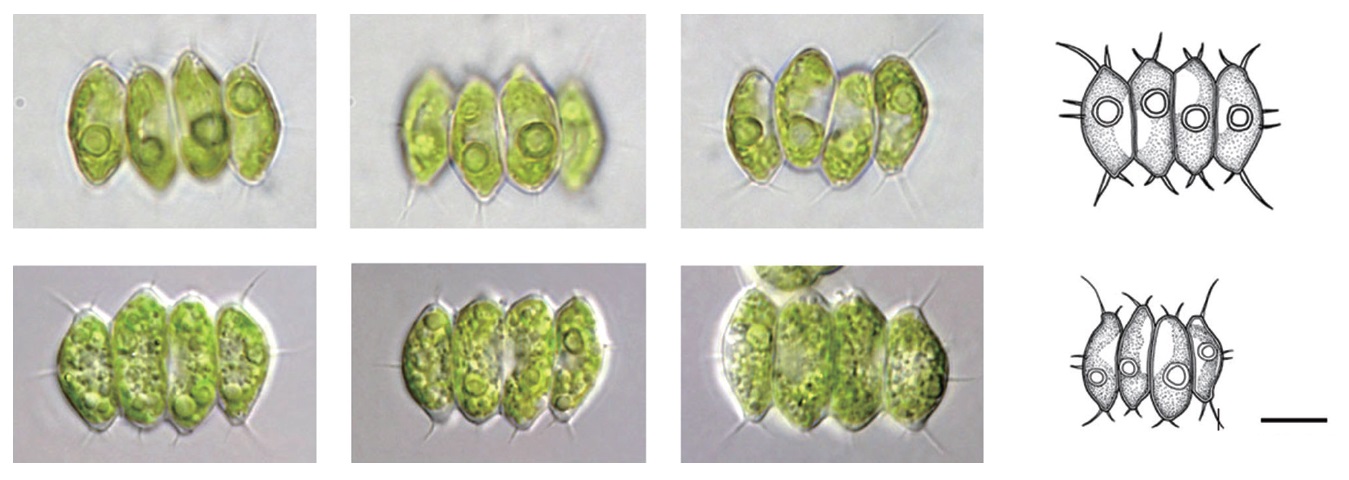



Order Chlorococcales is taxa belong to phylum Chlorophyta and class Chlorophyceae. Chlorococcales is considered a main taxa researches about rivers, lakes, and dams (Kim and Chung 1993). These plants, along with cyanophytes and diatoms, are biological indicators of the water environment (Thunmark 1945, Reynolds 1984, Kim 1998). Chlorococcales exist as unicells or colonies with diverse sizes and shapes, and do not have flagella, eye spots, contractile vacuoles, or basal bodies (Wilcox et al. 1992).
The order Chlorococcales was classified by Pascher in 1915 based on electron microscopic microstructure and molecular biology evidence; however, due to insufficient classification standards and descriptions, the synonyms have been confused, resulting in difficulties identifying the order Chlorococcales.
The order Chlorococcales is one of the largest taxa of green algae in freshwater worldwide. Komárek and Fott (1983) recorded 15 families 248 genera and 1,025 species worldwide, whereas Hindák (1977, 1980, 1984, 1988) recorded 12 families 96 genera, and 168 species excluding the genus
In Korea, order Chlorococcales contains 246 taxa classified into 12 families, 56 genera, 181 species, 64 varieties, and 20 forms (Lee 1996). Studies including Ann and
Chang (1985), An and Chang (1990), Kim et al. (1991) and Kim and Chang (1997) have been conducted on the order Chlorococcales in Korea but they are far behind international studies.
In this study, we collected phytoplankton and epilithic algae in Hongcheon River, and newly recorded species to contribute the Korean flora in the order Chlorococcales.
Order Chlorococcales specimens were collected in Hongcheon River from December 2011 to September 2012 (Fig. 1). The Hongcheon River starts in Saengok-ri Seosuk-myun Hongcheon-gun and is a second tributary of the Han River, which is 120 km in length (Yang et al. 1991). The vicinity of Hongcheon River is mostly mountains and farmlands, but parts go through city and factory or leisure areas (Choi and Kim 2004).
H1 is Cheoljeong-kyo, Cheoljeong-ri Duchon-myeon Hongcheon-gun Gangwon-do, H2 is Gurun-kyo Gurun-ri Hwachon-myeon H3 is Dunji-kyo Hahwagye-ri Bukbangmyeon, H4 is Palbong-kyo Eoyupo-ri Seo-myeon, H5 is Chungui-bridge Balsan-ri Nam-myeon Chuncheon-si (Fig 1).
Aquatic plants, submerged land plants, and rocks were scrubbed off to collect the attached algae, and surface water was sampled with a 20 μm mesh, 30 cm diameter phytoplankton net (Wildco, Yulee, FL, USA) to collect phytoplankton.
The collected specimens were separated by species using a Pasteur pipette under a light microscope and cul-tured in solid media. When a colony formed as a single species, it was transferred to liquid media.
All samples were examined under ×1000 magnification, and pictures were taken of the cell’s outer shape using an Olympus DP70 camera (Olympus, Tokyo, Japan). Then, using Adobe Photoshop CS4 (Adobe Systems, Mountain View, USA) and WACOM bamboo MTE-450K (WACOM, Seoul, Korea), the outer shapes of the cells and chlorophyll were depicted, and size is shown with a scale bar. All of specimens were deposited in the algal culture collection of Kyonggi University (ACKU) and the National Institute of Biological Resources (NIBR) in Korea.
The collected taxa were identified using the Komárek and Fott (1983) classification system, and Chung (1993), Prescott (1973), Prescott et al. (1972, 1977, 1981, 1982), Hindák (1977, 1980, 1984, 1988), Hirose et al. (1977), John et al. (2002), John and Robert (2003) were used as references. The species distribution was performed referring to Algaebase (Guiry 2013).
The morphological and ecological characteristics of the nine Korean unrecorded species including the unrecorded genera
Genus
Oocystidium ovale Korshikov 1953
Description: Cells spherical or ellipsoidal; usually 1.3 times as long as wide, sometimes twice. Cells individually or combined into 2–4 in colonies (Komárek and Fott 1983). The apical tips of the cells have chloroplasts and are divided in two, each with a pyrenoid. Cell size is 10–19μm long, 8–14 μm wide.
Ecology and distribution: Ponds in Romania, Spain, Argentina, Czechoslovakia, and Hungary (Komárek and Fott 1983). We found it as phytoplankton.
Site of collection: Chungui-bridge Balsan-ri Nam-myeon Chuncheon-si (H5).
Specimen: ACKU 9-296.
Genus
Heleococcus mucicola Korshikov 1953
Synonym:
Description: Cell wall is thin and smooth. Cells individual or 2–4-celled colonies with end of branch mucilage. Cells spherical or ellipsoidal. Cells 10–20 μm in diameter. Chloroplast thin, parietal. The center of the cell has a vacuole (Komárek and Fott 1983).
Ecology and distribution: Ireland and Sweden in overgrown swamps and sphagnum ponds (Komárek and Fott 1983). We found this species as epilithic algae in a river.
Site of collection: Dunji-kyo Hahwagye-ri Bukbangmyeon (H3).
Specimen: NIBRCL0000104603, ACKU 9-302.
Chlorella mirabilis V. M. Andreyeva 1975 (
Description: Cells individual, most spherical; young cells spherical and slight ellipsoidal. Cells 2–8 μm in diameter. Chloroplast parietal, usually filling two-thirds of the cell. Pyrenoid has small fragment.
Ecology and distribution: The Black Sea, Russia and at the bottoms of rivers in the tundra (Komárek and Fott 1983). It is also found in terrestrial habitats (Guiry 2013). We found it as phytoplankton.
Site of collection: Dunji-kyo Hahwagye-ri Bukbang-myeon (H3).
Specimen: ACKU 9-301.
>
Subfamily Ankistrodesmoideae
Monoraphidium convolutum var. pseudosabulosum Hindak 1970 (
Description: Cells individual or in a colony, Cell size is 4–6 μm wide, 12–16 μm long. Cells irregular or crescent; side of cell is convex and other side of cell is concave or spindle shape. Cell is blunt rather than acuminated, often associated with the end (Komárek and Fott 1983).
Ecology and distribution: Eutrophic water in Britain and the Hawaiian Islands, scattered as plankton and metaphyton mesotrophic, but widespread, probably cosmopolitan (Komárek and Fott 1983).
Site of collection: Gurun-kyo Gurun-ri Hwachon-myeon (H2).
Specimen: NIBRCL0000104605, ACKU 9-299.
>
Subfamily Ankistrodesmoideae
Monoraphidium minutum Komarkova-Legnerova 1969
Synonyms:
Description: Cells very small and individually crescent shaped, end part of cell is spiral. Chloroplast parietal, filling most of the cell, without a pyrenoid. Cells connected with a cell wall (Komárek and Fott 1983). Cell size is 1–3 μm wide, 3–10 μm long.
This species is smaller than the recorded description (3.5–20 μm long) by Komárková and Legnerová (1969).
Ecology and distribution: Ontario, China, and New South Wales, scattered in plankton and metaphyton in mesotrophic water; probably cosmopolitan but more in tropical and subtropical waters (Komárek and Fott 1983).
Site of collection: Gurun-kyo Gurun-ri Hwachon-myeon (H2).
Specimen: ACKU 9-300.
>
Subfamily Ankistrodesmoideae
Raphidocelis mucosa Komarek 1979
Synonyms:
Description: Cells individual or in colonies, with irregular arrangement of cells in mucilage. Cells narrowly fusiform, straight or slightly curved; crescent shape at a blunt end. Chloroplast parietal without a pyrenoid. Cells size is 2–5 μm wide, 4–12 μm long.
This species was wider than the recorded description (1.5–2.5 μm wide) by Komárková (1979).
Ecology and distribution: Planktonic in Romania; however, it has been specified up to now only in Czechoslovakia and Russia (Komárek and Fott 1983).
Site of collection: Palbong-kyo Eoyupo-ri Seo-myeon (H4).
Specimen: ACKU 9-298.
Eutetramorus tetrasporus Komarek 1983
Description: Cell size is 3–5 μm in diameter. Colonies 4, 8, or 16-celled but mostly four-celled (Komárek and Fott 1983), Cells spherical, early young cells are triangular in shape with mother cell in mucilage. Mature cells mostly spherical. Chloroplast parietal, each with a pyrenoid.
Ecology and distribution: Romania, Brazil, and Cuba in eutrophic water as plankton (Komárek and Fott 1983).
Site of collection: Gurun-kyo Gurun-ri Hwachon-myeon (H2).
Specimen: ACKU 9-297.
Scenedesmus flavescens Chodat 1913
Description: Colonies 2, 4, or 8-celled, most are 4-celled colonies. Outer cell is ellipsoidal, spindle shape, the lateral margins are swollen. Inner cell is elongated oval, spindle shape sometimes rounded and pentagon shaped. Both ends of the outer cell have two spines with a variety of sizes (long and short); center of outer cells has 1–2 short spine. Both ends of the inner cells have 1–2 short spines. Cell size is 8–10 μm wide, 18–30 μm long.
This species was larger than the recorded description (1.7–7 μm wide, 5.5–15 μm long) by Chodat (1913).
Ecology and distribution: Britain and Portugal and is planktonic in rivers.
Site of collection: Palbong-kyo Eoyupo-ri Seo-myeon (H4).
Specimen: NIBRCL0000104608, ACKU 7-257.
Scenedesmus multicauda Masyuk 1962
Description: Cells ellipsoidal, linear, slightly curved toward the outside. Four-celled colonies, sometimes found as two-celled colonies (Komárek and Fott 1983). Both inner and outer cells outside are long; 1–2 spines at the poles. Cell size is 3–10 μm wide, 7–13 μm long.
Masyuk (1962) described the spines as long or slightly shorter yet similar, but this species has longer spines than the cell size.
Ecology: Ponds and lakes as phytoplankton (Komárek and Fott 1983).
Site of collection: Cheoljeong-kyo Cheoljeong-ri Duch on-myeon (H1). Site of collection: Cheoljeong-kyo Cheoljeong-ri Duch on-myeon (H1).
Specimen: NIBRCL0000104609, ACKU 7-258.
The morphological characteristics of the nine taxa
identified in this study mostly corresponded to the reported characteristics; however,
The genus
The reported number of Korean species in the order Chlorococcales flora is very low compared to the internationally reported taxa. Therefore, more studies in various habitats are needed.
